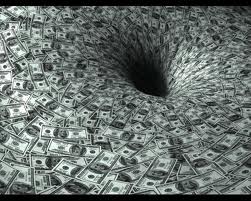by Ali Meyer • Washington Free Beacon
Outstanding federal debt is projected to hit $28.2 trillion over the next decade, according to a report from the Congressional Budget Office.
At the end of this year, outstanding federal debt is expected to climb to $19.4 trillion and to rise by $8.8 trillion in the next ten years.
The federal government’s budget deficit, which is the difference between how much money the government spends and how much money it takes in through tax collection, will be $590 billion by the end of 2016, $152 billion more than the previous year.
Government spending is projected to increase by 5 percent, or $178 billion, while government revenue is projected to increase by less than 1 percent, or $26 billion.
The rise in government spending is attributed to a 6 percent increase in outlays for Social Security and Medicare, a 1 percent increase in discretionary spending, and an 11 percent increase in net interest.
“Debt held by the public will amount to nearly 77 percent of GDP by the end of 2016, CBO estimates—3 percentage points higher than last year and its highest ratio since 1950,” the report states. “Three decades from now … debt held by the public is projected to be about twice as high, relative to GDP, as it is this year—which would be higher than the United States has ever recorded.”
The budget office says that rising debt will have serious consequences such as a substantial increase in spending on interest payments, a decrease in the nation’s capital stock, and declining productivity and wages, all of which increase the likelihood of a fiscal crisis.
The report projects that economic growth will expand at an average rate of about 2 percent in the second half of the decade, a slowdown from the average growth rates recorded during the 1980s, 1990s, and early 2000s. The budget office attributes this slowdown in projected growth to the nation’s low labor participation rate, which measures the percentage of the population that either had a job or sought one in the past month.
In the second quarter of 2016, the labor force participation rate was 62.7 percent. According to the Bureau of Labor Statistics, this is the lowest rate recorded since 1978.
The budget office attributes the decline in labor force participation to demographic trends such as the aging of the baby boomer generation. Lingering effects of the recession, a weak recovery, and federal policies such as Obamacare and the tax code have also depressed labor force participation.
“The rest of the projected decline in potential labor force participation stems from the Affordable Care Act and the structure of the tax code, both of which reduce workers’ incentive to supply labor,” the report states. “The Congressional Budget Office projects that employment as a percentage of the population will fall to 57 percent in 2026, reflecting that decline in the potential labor force participation rate.”
The White House did not respond to requests for comment.
